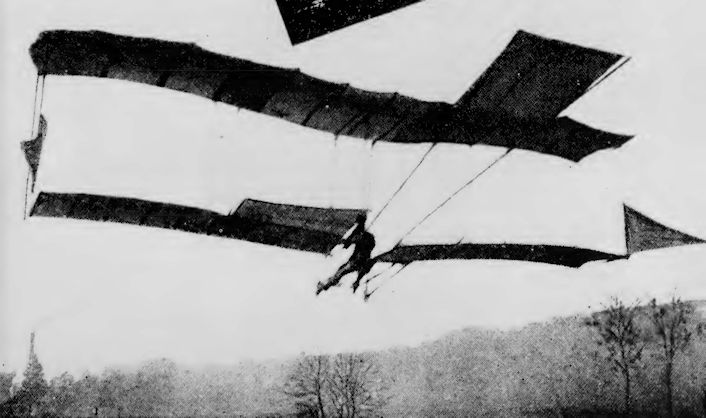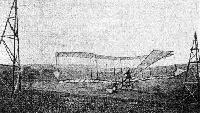
Описание
Страна: Франция
Год: 1905
L.Opdyke French Aeroplanes Before the Great War (Schiffer)
- L.Opdyke French Aeroplanes Before the Great War (Schiffer)
Фотографии
-
A.Andrews - The Flying Maschine: Its Evolution through the Ages /Putnam/
Captain Ferdinand Ferber, of the French Artillery, was 36 years old when Otto Lilienthal was killed, and he alone in France, with.Pilcher in England, had the understanding, the ambition and the youth to consider powered flight within his personal reach. In 1901 he built a Lilienthal-type hang-glider and began jumping off 20ft-high scaffolding to practise with it. But at the end of that year, through correspondence with Chanute, he learned of the work of the Wrights and built a Wright-type glider, basing his design on photographs Chanute had sent him. But he did not comprehend either the theory or the practice of the Wrights concerning control in roll, and did not incorporate wing-warping. His slightly improved version of his original glider, built in 1903, had two wing-tip rudders - affording him in reality no extra control - but he was so over-confident after soaring in it that he declared he was now ready to install a motor. His powered version of this Wright-type glider was a complete failure. During the next year, 1904, he recast his thinking and decided to aim for inherent stability by adding a tailplane to his design. When this picture of Ferber flying in his new machine was published in 1905, it had great influence in swinging European designers towards the Wright-type configuration of aeroplane, but in combination with the ‘old-world’ reversion to attempted inherent stability. As a ‘mood’ picture this conveys most seductively the exhilaration of flight. It will be judged that the flapping wing-tip rudders were giving Ferber no more control than a couple of burgees.
-
P.Jarrett - Pioneer Aircraft: Early Aviation Before 1914 /Putnam/
The Ferber VII-B of 1905 had a 12hp Peugeot engine and was launched from an overhead cable to make shallow powered glides.
-
L.Opdyke - French Aeroplanes Before the Great War /Schiffer/
The Ferber No 6 attempting to take off from a wire in 1905.
-
L.Opdyke - French Aeroplanes Before the Great War /Schiffer/
The power installation for the Ferber No 8. The unit is hung from 4 cables, perhaps to test thrust.
-
L.Opdyke - French Aeroplanes Before the Great War /Schiffer/
A contemporary drawing of the Ferber No 8; note the side-mounted Antoinette and the contra-rotating propellers.





